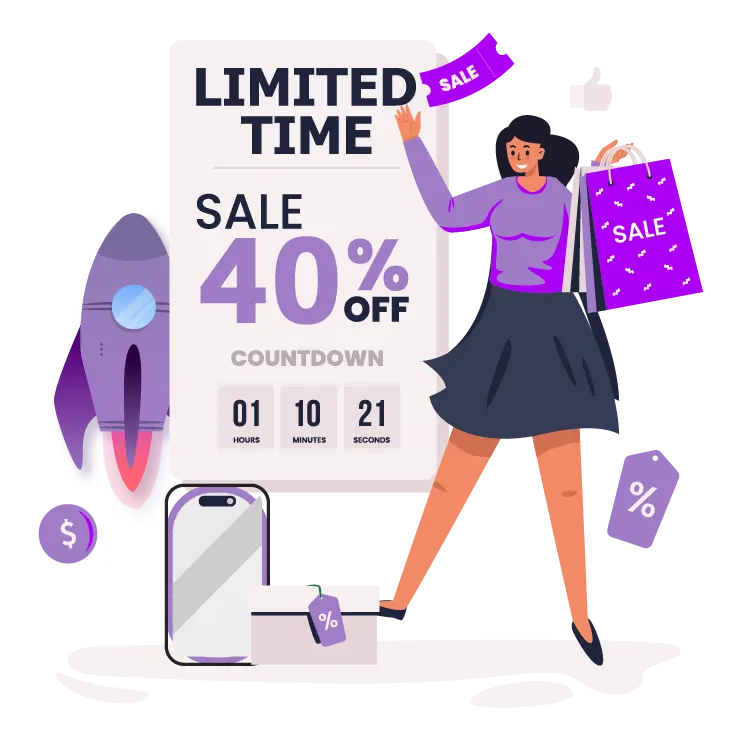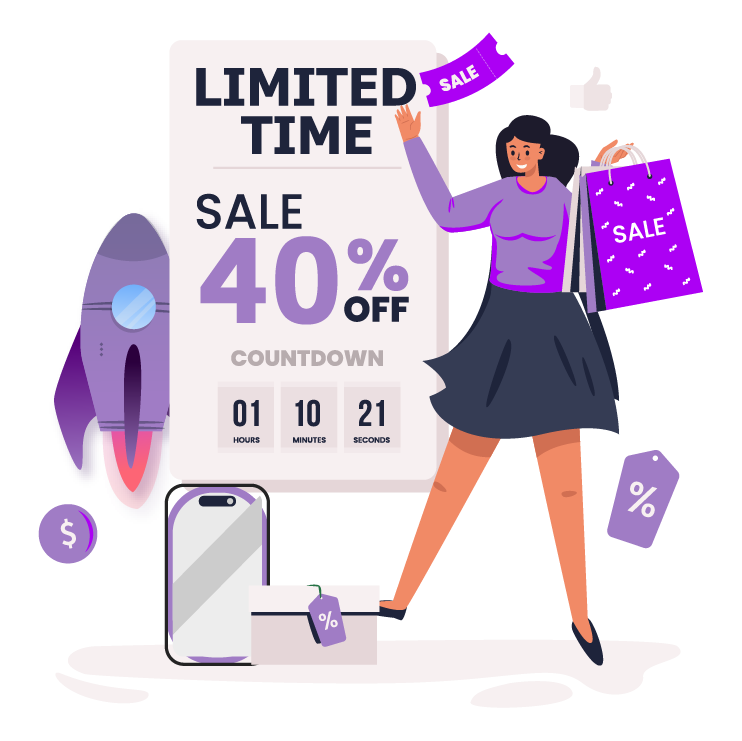
Developing an E-commerce Website for Selling Products
Are you thinking about starting an e-commerce online store? Every day, many people take a step toward opening one to fulfill their dream of having an online business. The fact is, developing a successful e-commerce website takes time, especially if you want to sell products through a high-quality site.
Our goal is to build a strong foundation, select the right platform, organize your site, make it engaging and customer-friendly, and set it up for growth. If you want to sell products online not just through an e-commerce website but a great one this blog will help you make smart, confident decisions for your online business.
It doesn’t matter what you’re selling online handmade items, clothing, accessories, digital products, etc. Let’s create an e-commerce website in a smart and effective way.
Decide Who Your Target Market Is & What Your Online Products Are
The biggest mistake many make is not knowing what products they will sell or who they are selling to. Before jumping into building an e-commerce website, finalize your target audience and your product lineup. What products are you selling? Who are your customers? Why should they care about your products?
This may sound simple, but many businesses fail by skipping this part. Once you understand your products and your audience, it becomes much easier to launch a successful online business.
Start Researching What You Know About Your Products
Sometimes you already have knowledge about your products, but more often than not, you will need to do research before setting up your e-commerce site.
What problems can I solve?
What products could be improved?
These essential questions help you discover niches and understand real potential before launching.

Understand Your Customers Before Selling Your Products
Entrepreneurs often assume their products are right for everyone, but that’s rarely true. Not all products suit all customers.
Before developing your website, segment your target audience based on age, gender, location, lifestyle, values, buying behavior, and competition. The better you know your customers, the better your chances of success.
Identify Your Customers' Interests
You may love your product, but it’s vital to know if your audience does too. Use free tools like Google Trends, Etsy, and Amazon to identify customer interests. If your audience is actively searching, discussing, and purchasing similar products, you are on the right path.
Before building your website, understand what your customers want to see and experience. Great e-commerce websites are built around customer preferences. Are they looking for home décor? Do they want affordable pricing?
Make sure your products solve real problems and appeal to your customers. Do they actually want this? How can I motivate them to buy?
Select the Right Platform for Selling Products

Choosing the right platform is crucial. Set up an e-commerce website and check its performance, look, and scalability all depend on this foundation.
Easy-to-Use Platforms
If you are new to online business, choose a beginner-friendly platform.
Shopify, Wix, and Squarespace offer simple tools to design and launch your site without needing a professional.
Customization Options
Some platforms offer full control over design and features. WooCommerce on WordPress is great for personalized, custom e-commerce websites.
Budget
Each platform has different pricing models. Consider your budget when selecting. Shopify charges a monthly fee. Some platforms are free but require separate hosting. Compare costs before committing.
Scalability
As your business grows, your site must scale with it. A scalable platform is a must.
Community & Support
You will need support to avoid roadblocks. Shopify and WooCommerce offer great support and developer communities.
Test Before Launching Your Website
First impressions matter. Test everything before launching your website. Ensure all buttons and links work, especially your Call to Action (CTA) and checkout process. Broken links or malfunctioning buttons destroy trust.
Mobile optimization is crucial. Many customers browse and shop from their phones. If your site is slow or poorly formatted on mobile, it will hurt your business. Think like a visitor. What could make them leave your site? Fix those pain points to keep them engaged.Testing is a critical step to develop an ecommerce website.

Conclusion
Follow this guide step-by-step for developing a successful e-commerce website. Every part plays a vital role in setting up a professional online store. Make smart choices, do your research, and always think from the customer’s point of view.




